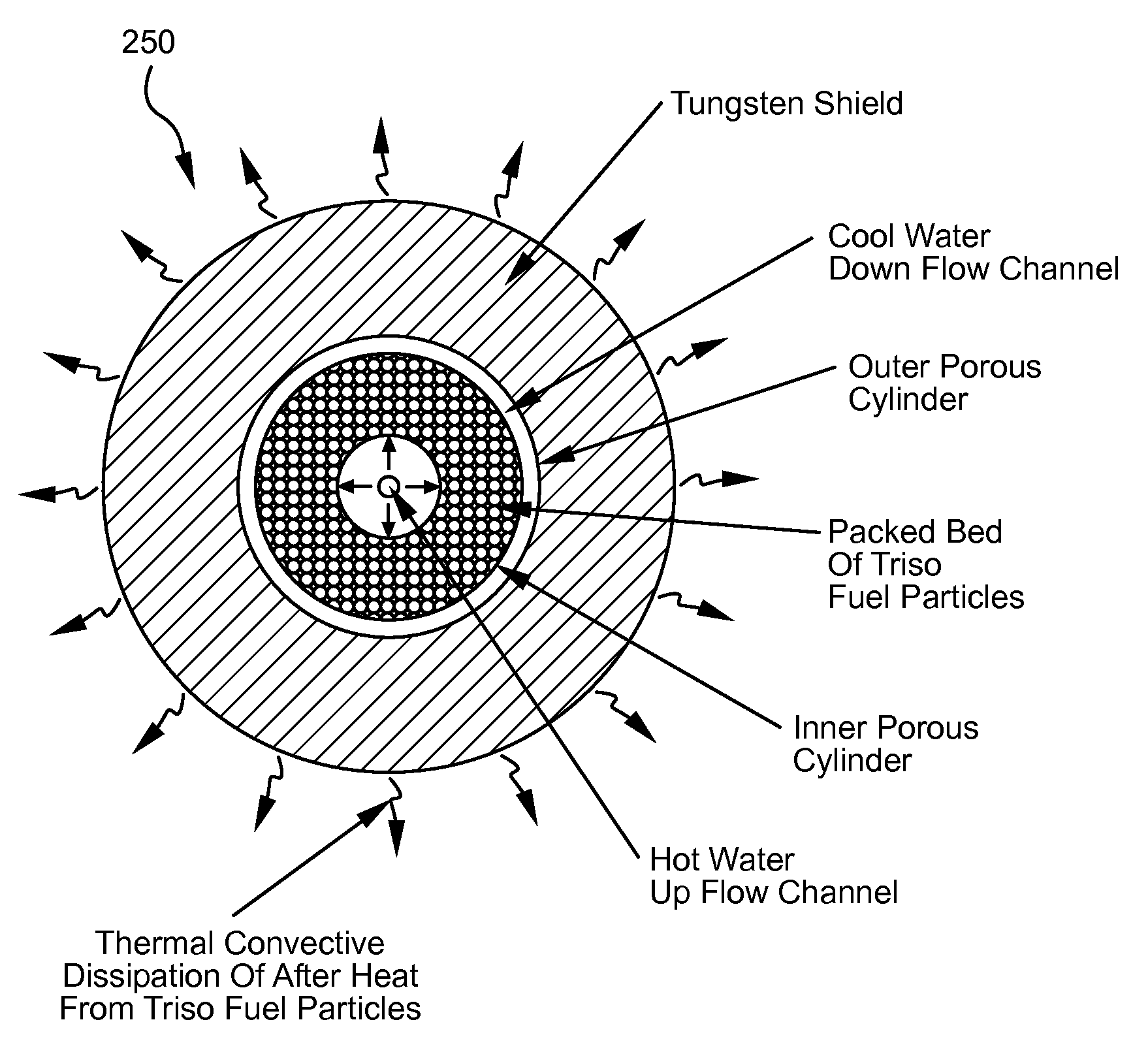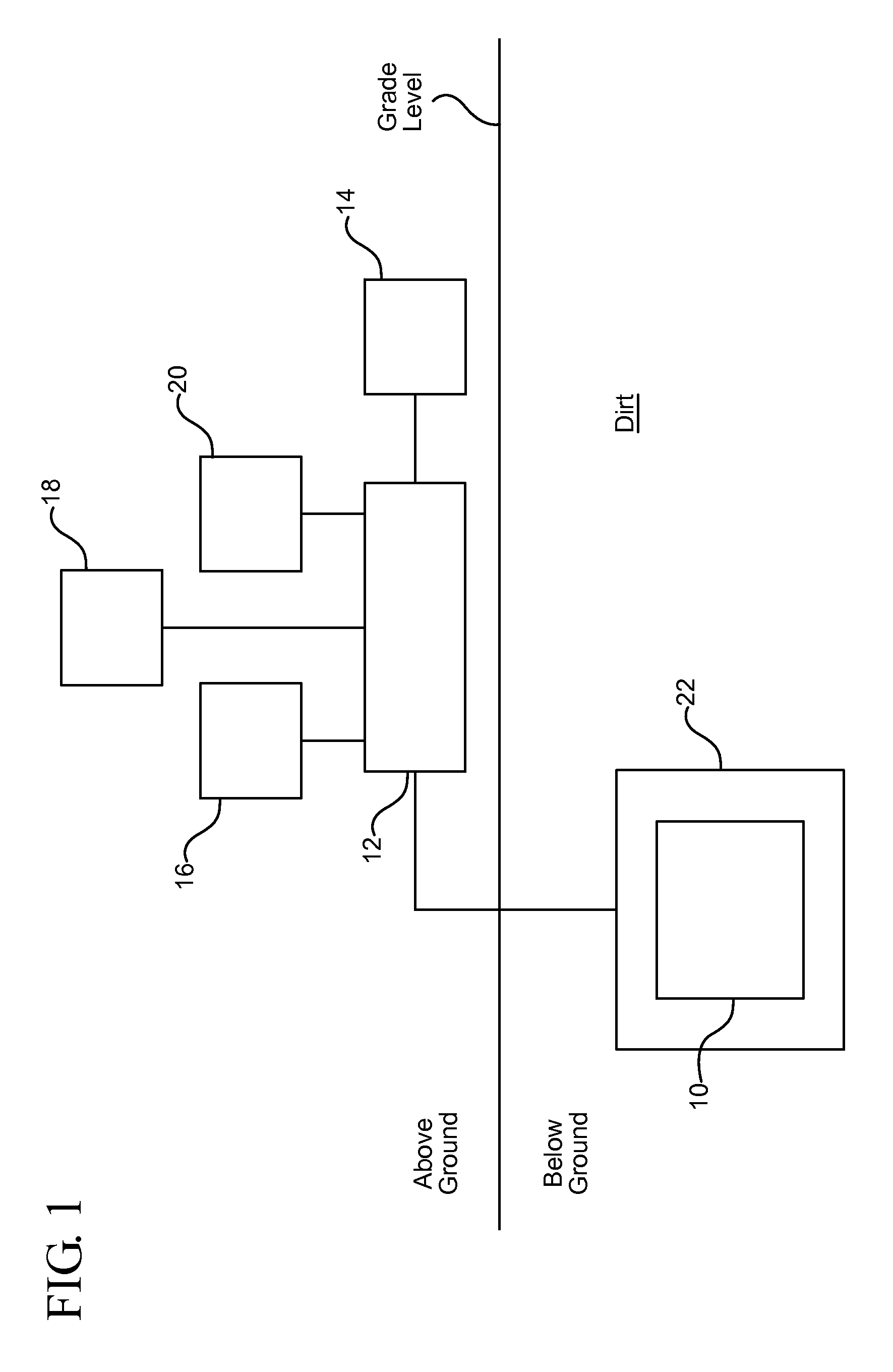Deployable electric energy reactor
- Summary
- Abstract
- Description
- Claims
- Application Information
AI Technical Summary
Benefits of technology
Problems solved by technology
Method used
Image
Examples
first embodiment
[0031]the present invention, i.e., the DEER system, is a fully sealed reactor using UZrH1.6 fuel. The DEER reactor is not refueled at the site. After reaching its reactivity limited lifetime, the reactor module will be transported away for refueling or disposal and a new module brought to the site, if desired. For disaster relief, one reactor module per mission would likely be sufficient. For power / water / fuel / fertilizer production, additional modules would be necessary. The removed DEER module has an integral gamma shield that limits radiation dosage to handling and transport personnel to values well below existing guidelines. There is no residual radioactivity at the operating site after the end of the mission.
second embodiment
[0032]the present invention, i.e., the DEER-U2 design, uses TRISO fuel particles that are hydraulically unloaded from the reactor after shutdown, enabling periodic refueling even though the reactor vessel is sealed. The particle unloading / loading uses small diameter pipes that are valved shut during operation. Spent TRISO fuel particles are loaded into a compact, fully shielded transport cask. The shielding for the DEER-U2 reactor may include dirt, sand, water or other locally available material. Because the DEER-U2 reactor does not require an integral shield, the DEER-U2 system weighs much less than that DEER system. The DEER-U2 reactor can remain at a site for as long as power output is needed.
[0033]There are two preferred DEER reactor sizes, namely 10 MW(e) and 50 MW(e). The 10 MW(e) module's thermal power is 40 MW(th), based on a cycle efficiency of 25%, and a turbine exhaust pressure of 15 psi for waste heat reaction to the atmosphere. The 50 MW(e) module's thermal power is 200...
PUM
 Login to View More
Login to View More Abstract
Description
Claims
Application Information
 Login to View More
Login to View More - R&D
- Intellectual Property
- Life Sciences
- Materials
- Tech Scout
- Unparalleled Data Quality
- Higher Quality Content
- 60% Fewer Hallucinations
Browse by: Latest US Patents, China's latest patents, Technical Efficacy Thesaurus, Application Domain, Technology Topic, Popular Technical Reports.
© 2025 PatSnap. All rights reserved.Legal|Privacy policy|Modern Slavery Act Transparency Statement|Sitemap|About US| Contact US: help@patsnap.com



